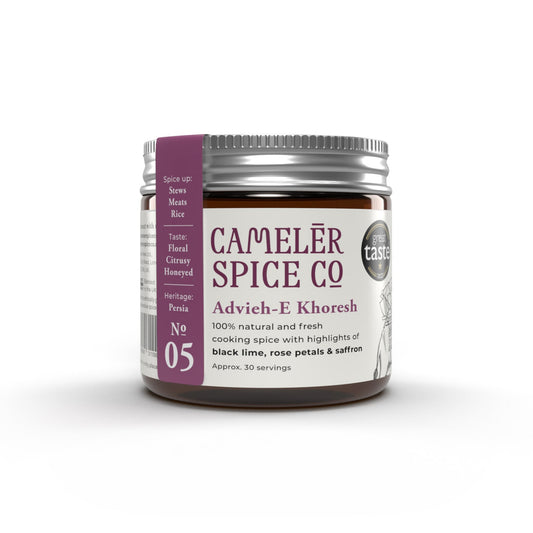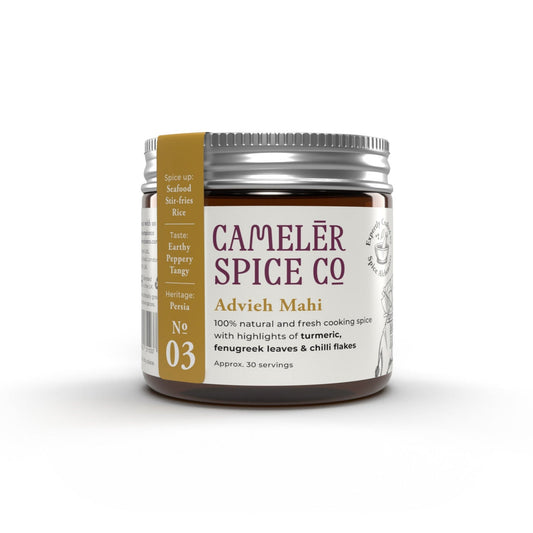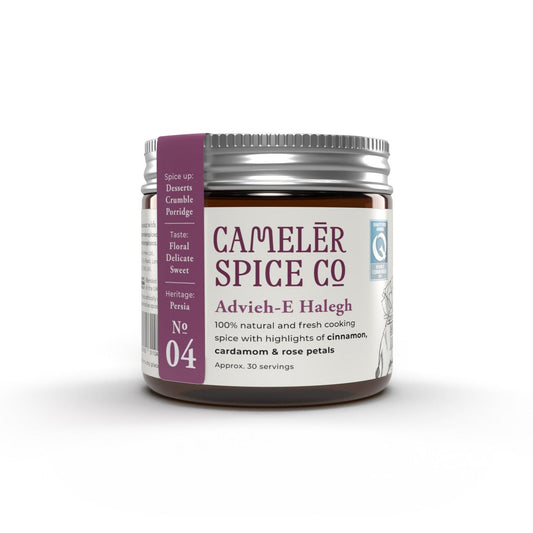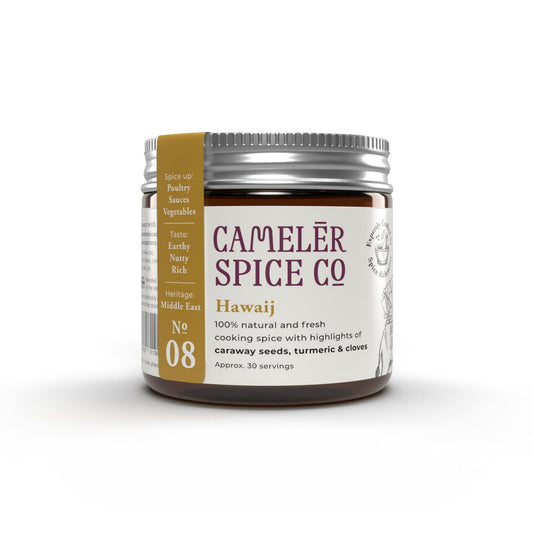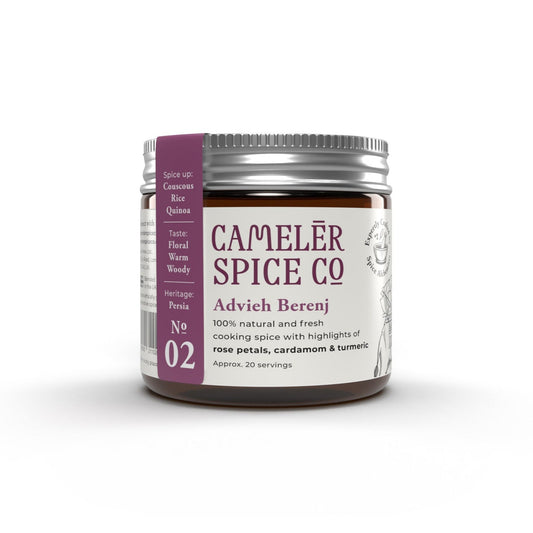
Collection: Turmeric
(Also Known as Indian Saffron, False Saffron, and Haldi)
What does turmeric taste like?
Turmeric in powder form comes from the root of a flowering plant that is part of the ginger family. It has a warm, ginger-like, floral fragrance and a slightly woody, bitter taste. While it imparts a hue similar to saffron, it lacks a distinctive flavor, acting more as a base with earthy properties. Therefore, it works well with other complex blends. A "less is more" approach is crucial to avoid overpowering the blend with bitter notes.
Turmeric adds pungency to curry and invigorates rice, vegetable stews, and egg dishes. It plays a pivotal role in many masala blends. India is the largest producer, consumer, and exporter of turmeric. During medieval times in Europe, it was often used as an imitation of "Indian saffron" for dyeing cloth, though it didn't replace saffron in taste. Like all herbs and spices, turmeric should be kept away from light.
What flavours go with turmeric?
- Asparagus
- Caraway
- Cinnamon
- Chilli peppers
- Cloves
- Coriander
- Cumin
- Curry Leaves
- Ginger
- Garlic
- Honey
- Paprika
- Saffron
- Sweet Potato
Our rich-in-turmeric Yemeni blend, Hawaij, is bursting with flavors like caraway, cloves, and coriander, showcasing the homage in this alchemy. Our 6th Century BC Advieh Mahi is traditionally used in Persian fish recipes. A fresh spice mix with flavors like turmeric, chilli, cumin, and garlic.
What are the health benefits of turmeric?
Turmeric is high in trace mineral manganese, which helps process fatty acids and cholesterol. It aids digestion, blood circulation, and cholesterol levels. The ancient system of Ayurveda suggests it may remedy stomach and liver ailments with its antimicrobial, anti-inflammatory, antibacterial, and antioxidant properties. Europeans have suggested turmeric for arthritis, asthma, and eczema.
What are interesting facts about turmeric?
- In the pre-Christian era, traders brought turmeric from Camelēr's land to North Africa and Persia for culinary purposes. Britain popularized turmeric as part of an all-purpose curry during Imperial India.
- Turmeric, whiskey, and honey are essential components of classic South African hot toddy drinks, used to soothe sore throats and clear winter colds.
- The yellow in mustard typically comes from turmeric, not the mustard seed.
- According to Aston University, Birmingham, turmeric is a natural antivenom against King Cobra bites.
- Erode, India, is the largest turmeric producer globally, known as the "Yellow City" or "Turmeric City." In Hindu rituals, turmeric is worshipped as a symbol of the sun.
What is the chief flavour compound of turmeric?
Curcumin and turmerone: (earthy, musky, and woody). The dominant earthy compounds of turmeric are complemented by minor compounds, leaving room to pair well with other spices and herbs. Cumin, paprika, and cardamom bring a rich smokiness and earthiness to unlock the depth of turmeric’s flavor.
Shop Spices With Turmeric
-
Advieh-E Khoresh
Regular price £8.95 GBPRegular priceUnit price / per -
Advieh Mahi
Regular price £8.95 GBPRegular priceUnit price / per -
Advieh-E Halegh
Regular price £8.95 GBPRegular priceUnit price / per -
Advieh Berenj
Regular price £8.95 GBPRegular priceUnit price / per


